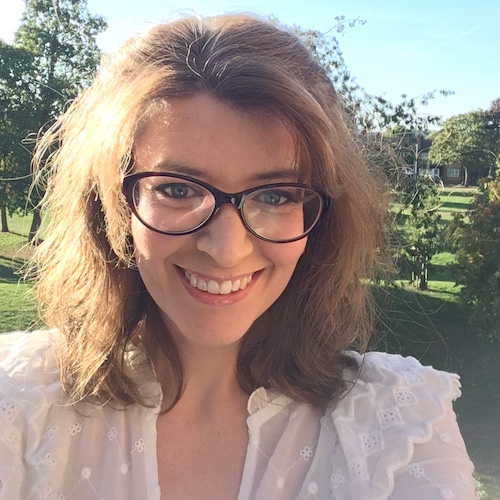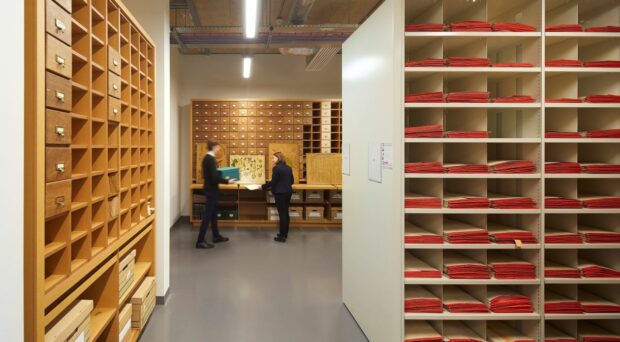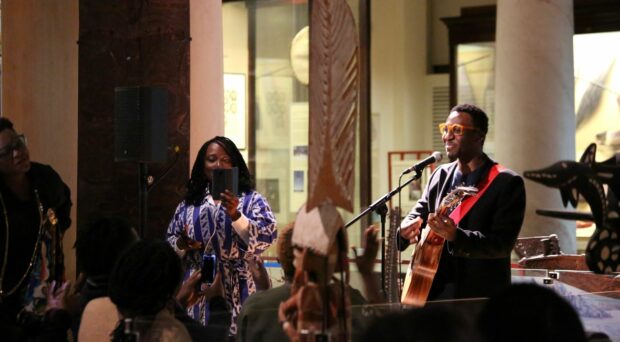Our audiences are full of creativity, something we see in bucketfuls at our events and workshops. We wanted to go further, and showcase audience creations and collaborations in our programming and displays.
As a Museum celebrating the wonders of the natural world, we have an innate desire to protect it. We have committed to embedding sustainability into our public programme : tackling the materials we use and considering the impacts of activity outputs. Not all craft day creations end up on the fridge, let alone as an item cherished for life. Could we bear the thought of our logo sitting atop a landfill?
With this focus on collaboration and sustainability in mind, and with the help of the artistic mind of volunteer Fanny Bara Moreau, we designed a summer activity with longevity at its core.
Every summer, the University of Cambridge Museums box up their wares and head out into the weather with themed activities to communities across the city with Cambridge City Council’s Big Weekend and Children and Young People’s Participation Service (ChYpPs). Summer 2019 had a tropical oceans theme at the Museum of Zoology, with the goal of inspiring conversations around the conservation of our coral reefs. We wanted to use this as an opportunity to bring audiences together through shared making and showcase their creations in our programmes and displays.
We took inspiration from our ‘Patchwork World Map’ project, created from individually-made sections sewn into a large tactile map of the world populated by animals.
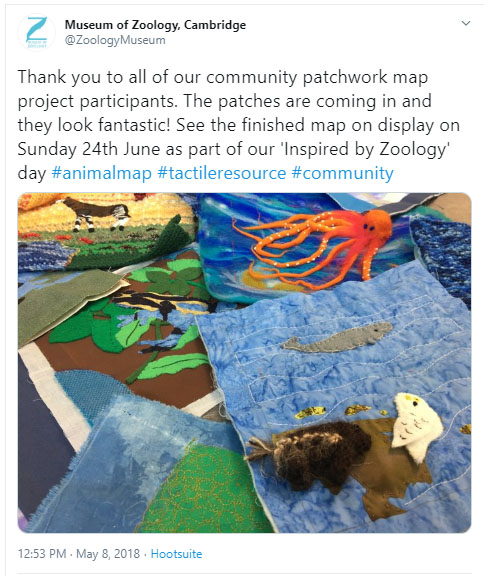
We also piloted a collaborative family making activity at our Zoology Live festival in June 2019.
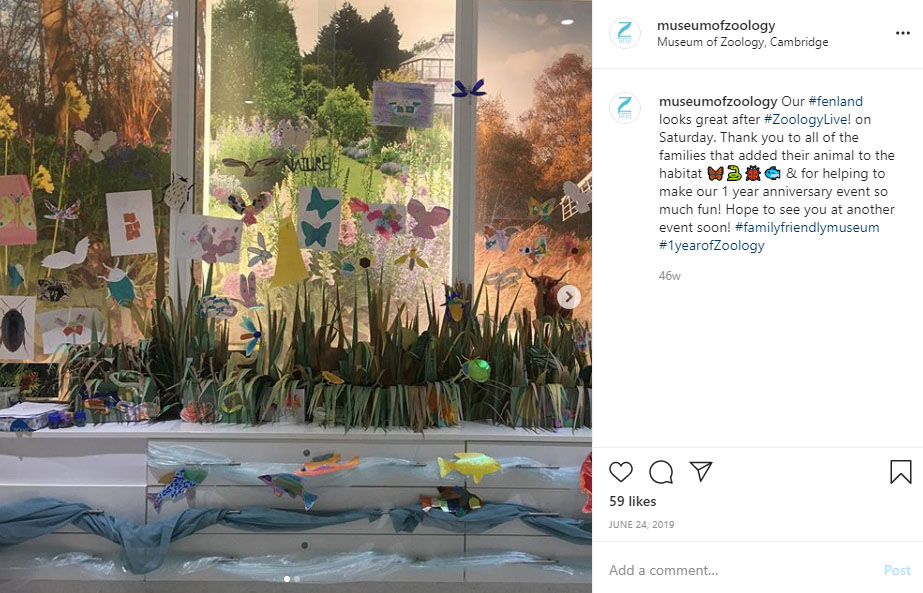
We wanted to emulate the collaborative aspect of these projects, as well as create another resource for future programming and activities.
Not forgetting our overall goal of using sustainable materials, we had our work cut out for us.
What came out of several conversations over (essential) coffee was a 5-metre long scroll of empty reef, soon to be populated with corals. From our point of view we liked how transportable it was, neatly rolling up, and that the only materials were paper, paper straws, and water-based paint. Huzzah!
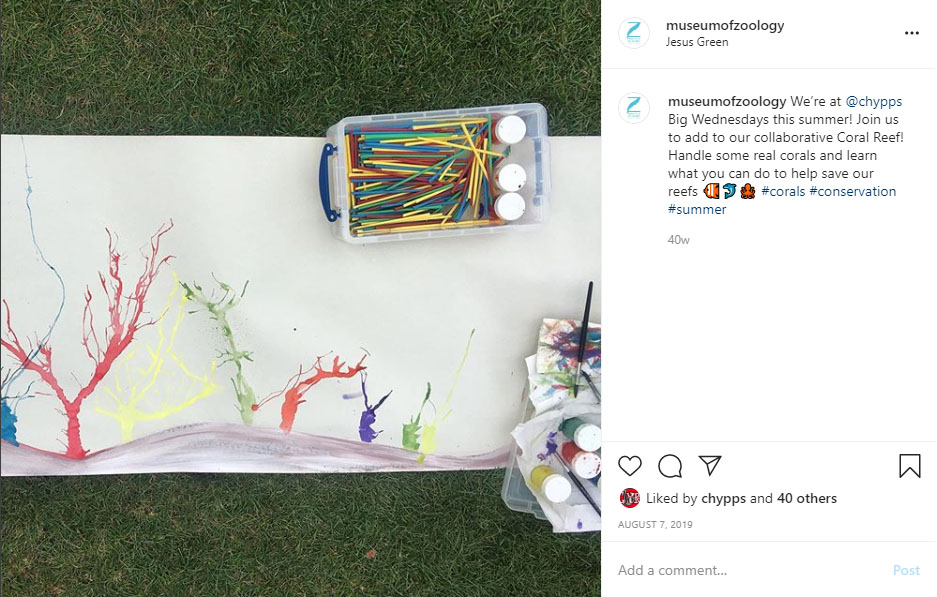
Alongside handling boxes, participants could explore real coral specimens and had the opportunity to create (reusable) collages from shells. Families across Cambridge were invited to add to the reef using pools of very watery paint, blown into organic branching patterns with a paper straw. There were several ‘races’ to the top of the paper over the course of the summer.
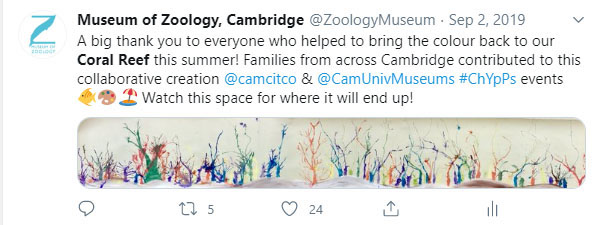
We were so happy with what our Cambridge communities created that we began to embed it within further activities, including as a backdrop to an underwater drama created by our Young Zoologists Club and to recycled makes created by visitors to our ‘Winter Wildlife: A Christmas Coral’ (excuse the pun) family day.
Just as we did for our patchwork map, we found a space in the gallery to show-case the work of visitors. We settled on a long table-case on our mezzanine level. It was the perfect shape for our scroll of a reef, and was a space that most visitors would see. Unfortunately, it is not a fully accessible space, and for future projects we are considering how to make its content available to audiences unable to use the stairs.
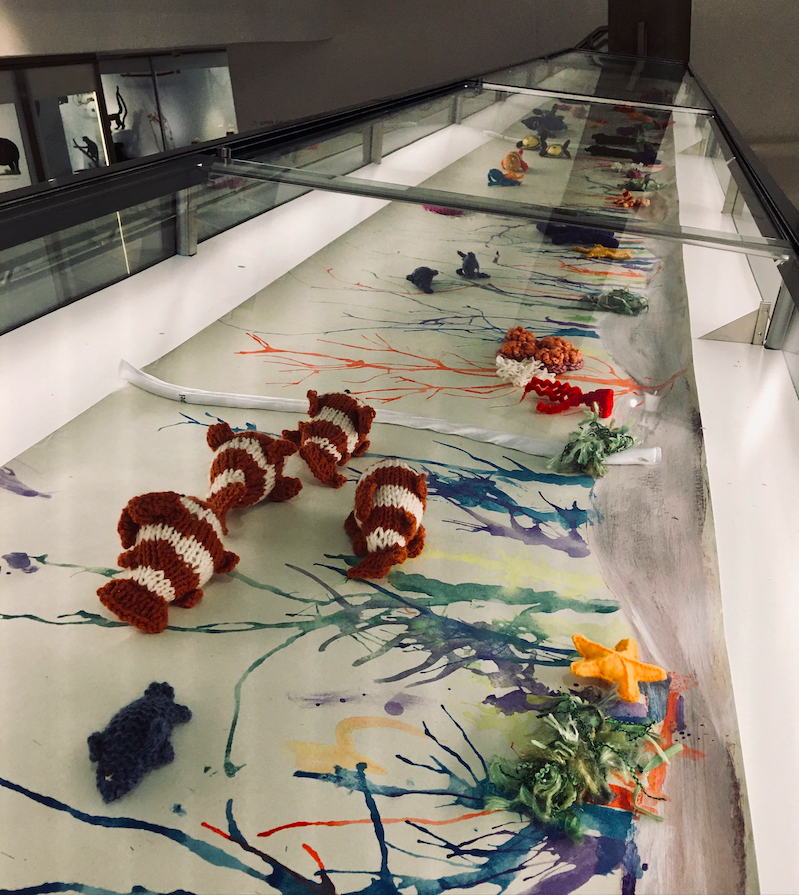
The knitted and crocheted animals that you can see here were created by our local WI attendees to Creature Crafternoons, with our early years audiences in mind, and a desire from the team for more diverse ocean dwelling creatures in toy form.
Best of all, we not only generated meaningful conversations and activities for our visitors, but also new resources for future programmes, and a wonderful, colourful, collaborative display for all to see.
Of course, to be used in our learning programmes, the resources had to come out of the display case. However, our collaborative coral reef has inspired further projects displaying work created by our visitors. In March 2020, we ran a workshop in partnership with the Cambridge Conservation Initiative and led by artist Hilary Cox Condron to create a vision of Cambridge where we can live in harmony with nature. The collaborative artwork created during this ‘World of Tomorrow’ workshop was made from recycled materials, and included wonderful creative solutions for sustainable transport, homes for wildlife and food production. This was put on display in our ‘Communities Case’ on the mezzanine with the aim of inspiring further conversations about wildlife conservation between our visitors.
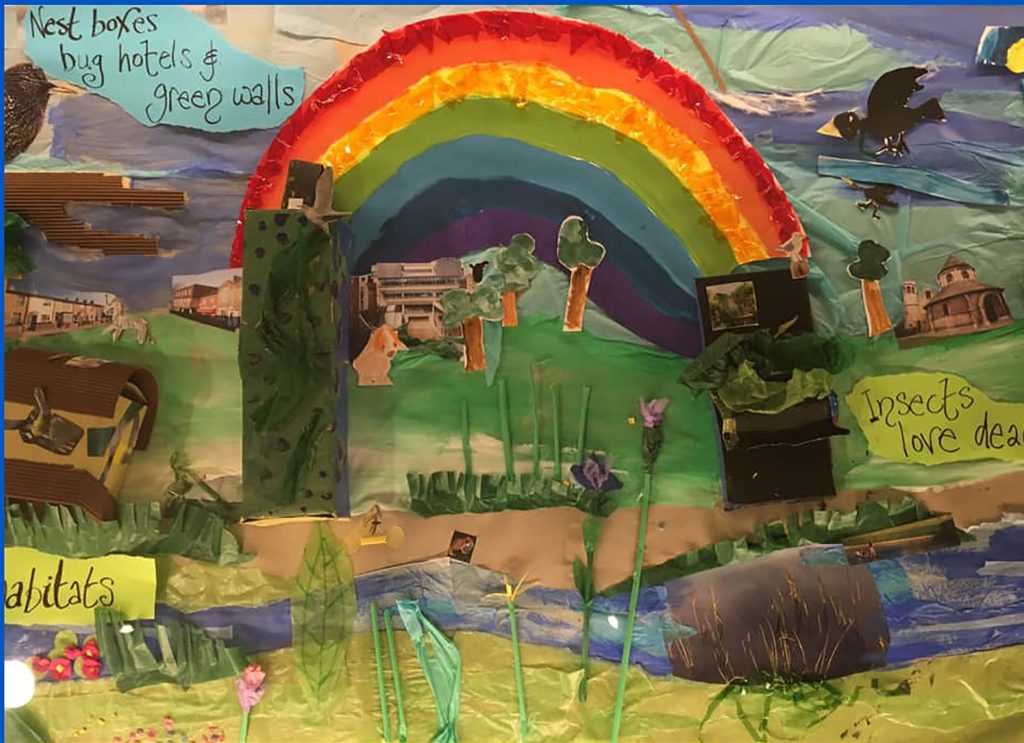
We entered 2020 with a view to either using the materials we already have, or ordering only recyclable and sustainable materials. Not only does this do us good, but it also allows visitors to see the potential of craft materials that are not harmful to the planet.
While our non-recyclable materials stock is shrinking, our bank of bespoke and inspired resources is growing. The reef continues to give in the form of new online resources. Families can get stuck into making their own at home or gain help with home schooling during lockdown:
https://museumofzoologyblog.com/2020/05/04/dive-into-a-coral-reef/
https://museumofzoologyblog.com/2020/05/11/our-changing-reef-habitats/
By creating a space within the gallery amid the zoological specimens for community collaborations, we hope to provide a sense of ownership of space for our audiences. Our programmes aim to celebrate the animal kingdom and nurture a desire to protect it. We are proud of the passion our visitors have for the natural world, and through these projects hope to encourage more conversations about wildlife conservation.
We want to make the most of the creations by our wildlife-loving audiences, and during the lockdown our community space has moved online. Here you can add to the ‘World of Tomorrow’ with your creative recycled solutions to live in harmony with nature.
Have you created something animal-themed during lockdown? Or spotted some wildlife from your window? Why not add it to your Community Gallery of lockdown wildlife sightings.
We hope to be able to include more photos of sightings and makes as time goes on so do get in touch via our social media platforms or umzc@zoo.cam.ac.uk to submit.


